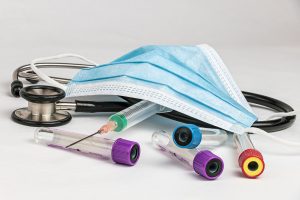
Feasibility and Techno-Economic Aspects of Blood Collection Needle Manufacturing
In an era of progressivism in medical care, particularly in relation to blood collection needles, it is important to consider the development and manufacturing side within the medical diagnostic and treatment continuum. This article investigates the feasibility and techno-economic aspects of investing in blood collection needle manufacturing. Key aspects of the review include market size, market trends, SWOT analysis, revenue, growth, geographic expansion, and more, providing a comprehensive dossier for potential investors and market participants.
Longitudinal Market Size, Share, and Trends
- Growing Hospital Demand
The global market for blood collection needles has grown considerably, largely due to the increasing hospital demand for these needles worldwide. This growth is attributed to factors such as the increased availability of healthcare diagnostics, a rise in diagnosed illnesses requiring blood testing, heightened public interest in diagnostic collection and phlebotomy, as well as improved manufacturing processes for blood collection needles. - Growth Due to Innovation
Advancements in blood collection techniques—particularly safety needles and pain-free collection devices—have promoted growth. Additionally, the expansion of healthcare facilities in emerging economies presents substantial growth opportunities for blood collection needle manufacturers. - Regulatory Requirements
The standardization of healthcare practices across nations adds complexity to the development of the marketplace. Manufacturers and distributors of blood collection needles must navigate regulatory obstacles to ensure compliance and successful market entry.
Related Project Profile on: Disposable Needles
SWOT Analysis and Profitability Considerations
- Strengths and Opportunities
The blood collection needle market’s strengths are driven by its essential role in diagnostics and its interoperability with technological advancements. Opportunities exist in creating needles that are more reliable and less invasive, aligning with the patient-centered healthcare approach. - Weaknesses and Threats
The industry faces challenges such as competition from alternative blood collection methods and the need for constant innovation. Additional threats include restrictive regulatory environments and potential supply chain disruptions. - Profitability Opportunities
Despite challenges, profitability opportunities are promising. Blood collection for diagnostics and therapy will continue to be a critical need. There are ample growth and profitability opportunities to capitalize on for potential investment.
Related Business Plans: Surgical, Medical Plastics, Medical Disposables, Disposable Medical Products used in Hospitals
Global Growth, Customization, and Distribution of Supply Chain
- Broadening Horizons
Global growth is essential for manufacturers, especially in emerging markets with rapidly expanding healthcare ecosystems. - Customization Strategies
Customizing manufacturing plants and products to meet local regulations and preferences is crucial for market success in various regions. - Supply Chain Dynamics
Efficient supply chain operations—from sourcing raw materials to distribution—are critical for cost-effective operations and maintaining a competitive edge in the market.
Branding, Marketing, and Compliance with Regulatory Requirements
- Branding and Marketing
Effective branding and marketing strategies are essential for strong market positioning. This involves understanding customer needs, highlighting product advantages, and building brand trust. - Compliance with Regulatory Requirements
Compliance with product and regulatory standards is non-negotiable. Companies must stay updated with legislative changes to maintain uninterrupted market access.
New Technology and Understanding Competition
- Keeping Up with Technology
Staying at the forefront of technological advancements is key, particularly through investment in research and development to create more effective, user-friendly, and affordable products. - Understanding the Competition
A thorough understanding of competitors is crucial for identifying market gaps and opportunities for growth. - Understanding New Regulations
Medical tools, particularly blood collection needles, are subject to strict regulatory oversight. Manufacturers must keep up with regulatory changes to avoid disruptions in market access.
Technical and Innovative Designs
- New Concepts for Better Safety
Innovations like retractable needles, safety caps, and pain-reducing devices are gaining traction in the market. - Integration of Smart Technology
Smart needle devices that can track and record data will enhance diagnostics and data management capabilities, shaping the future of blood collection tools.
Competitor Analysis: Identifying the Competition
- Competitor Benchmarking
Benchmarking competitors’ practices, strengths, weaknesses, and customer preferences provides valuable insights for decision-making. - Emerging Markets
expanding healthcare infrastructure in emerging markets offers growth opportunities. Customizing products for regional needs is key to gaining a competitive edge.
Supply Chain Resilience and Branding Strategies
- Building Resilience
Resilient supply chains are essential, especially in light of disruptions like the pandemic and geopolitical trade disputes. Flexible manufacturing and visibility in supply chains are critical for sustainability. - Branding in the Medical Device Segment
Trust and reliability are key drivers of branding. Strategies include quality assessments, partnerships, and participation in industry conferences.
Innovative Marketing Strategies and Regulatory Compliance
- Innovative marketing
a combination of traditional and digital marketing approaches, such as educational content and targeted ads, can reach a larger audience and build brand identity. - Compliance and Brand Reputation
Compliance is essential to brand reputation. Failure to comply with regulations can result in legal consequences, damaging both the brand’s image and consumer trust.
Investing in Research and Development
- Opportunities in Emerging Technologies
emerging technologies, like nanotechnology and biocompatible materials, provide opportunities for innovation and the development of safer devices. - Balancing Cost and Innovation
Companies must balance innovation with production efficiency, utilizing economies of scale to maintain profitability while delivering high-quality products.
Conclusion
The blood collection needle sector is at a pivotal moment, with significant opportunities for growth and innovation. By understanding market dynamics, embracing technological advancements, and adopting effective business strategies, companies in this sector can position themselves for success. Prioritizing quality, patient safety, and regulatory compliance will be key to shaping the future of this essential industry.
Visit this Page for More Information: Start a Business in Medical Disposables Industry